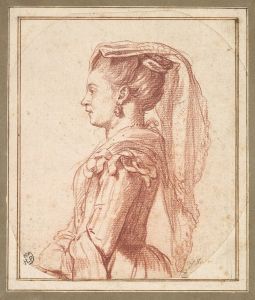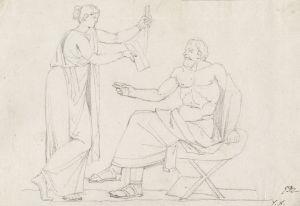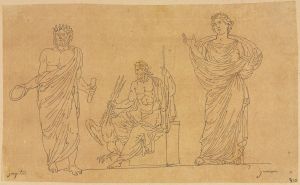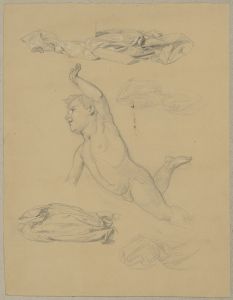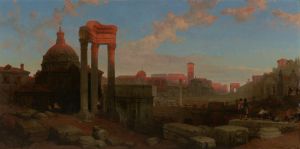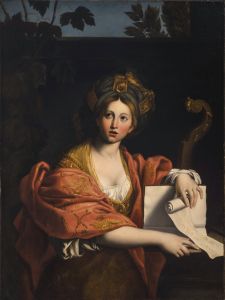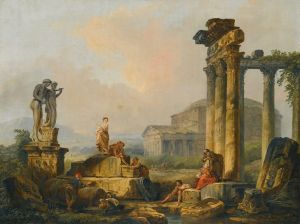
Statue of Flora seen from the Front, in the Palazzo Giustiniani, Rome
A hand-painted replica of Jacques Louis David’s masterpiece Statue of Flora seen from the Front, in the Palazzo Giustiniani, Rome, meticulously crafted by professional artists to capture the true essence of the original. Each piece is created with museum-quality canvas and rare mineral pigments, carefully painted by experienced artists with delicate brushstrokes and rich, layered colors to perfectly recreate the texture of the original artwork. Unlike machine-printed reproductions, this hand-painted version brings the painting to life, infused with the artist’s emotions and skill in every stroke. Whether for personal collection or home decoration, it instantly elevates the artistic atmosphere of any space.
"Statue of Flora seen from the Front, in the Palazzo Giustiniani, Rome" is a painting by the renowned French artist Jacques-Louis David. Jacques-Louis David, born on August 30, 1748, in Paris, was a highly influential painter in the Neoclassical style, which sought to revive the classical art and culture of Ancient Greece and Rome. David's works are characterized by their clarity of form, sober colors, and strong emphasis on the depiction of historical subjects.
The painting in question, "Statue of Flora seen from the Front, in the Palazzo Giustiniani, Rome," is one of David's lesser-known works. It depicts a statue of Flora, the Roman goddess of flowers and the season of spring, who was a symbol of nature and fertility. The setting of the painting is the Palazzo Giustiniani in Rome, a significant location that houses an extensive collection of classical sculptures and artworks. The Palazzo was historically owned by the Giustiniani family, who were prominent art patrons during the Renaissance and Baroque periods.
David's interest in classical subjects is evident in this painting, as he often drew inspiration from his time in Rome, where he studied the works of the great masters and the ruins of antiquity. The depiction of Flora in this painting reflects David's skill in capturing the grace and beauty of classical sculpture through the medium of painting. The attention to detail and the realistic portrayal of the statue demonstrate David's mastery of form and his dedication to the Neoclassical ideals of harmony and proportion.
The painting is notable for its composition, which focuses on the frontal view of the statue, allowing viewers to appreciate the intricacies of the sculpture's design. David's use of light and shadow enhances the three-dimensionality of the statue, bringing it to life on the canvas. This technique is a hallmark of David's style, as he often employed chiaroscuro to create depth and volume in his works.
While "Statue of Flora seen from the Front, in the Palazzo Giustiniani, Rome" may not be as famous as some of David's other paintings, such as "The Death of Socrates" or "The Oath of the Horatii," it remains an important piece within his oeuvre. It exemplifies his commitment to the Neoclassical movement and his ability to convey the timeless beauty of classical art through his paintings.
Jacques-Louis David's influence on the art world extended beyond his own works, as he played a crucial role in shaping the direction of French art during the late 18th and early 19th centuries. His teachings and mentorship of younger artists helped to perpetuate the Neoclassical style, making it a dominant force in European art for decades.
In summary, "Statue of Flora seen from the Front, in the Palazzo Giustiniani, Rome" is a testament to Jacques-Louis David's artistic prowess and his dedication to the principles of Neoclassicism. Through his meticulous attention to detail and his reverence for classical antiquity, David created a work that continues to be appreciated for its beauty and historical significance.







